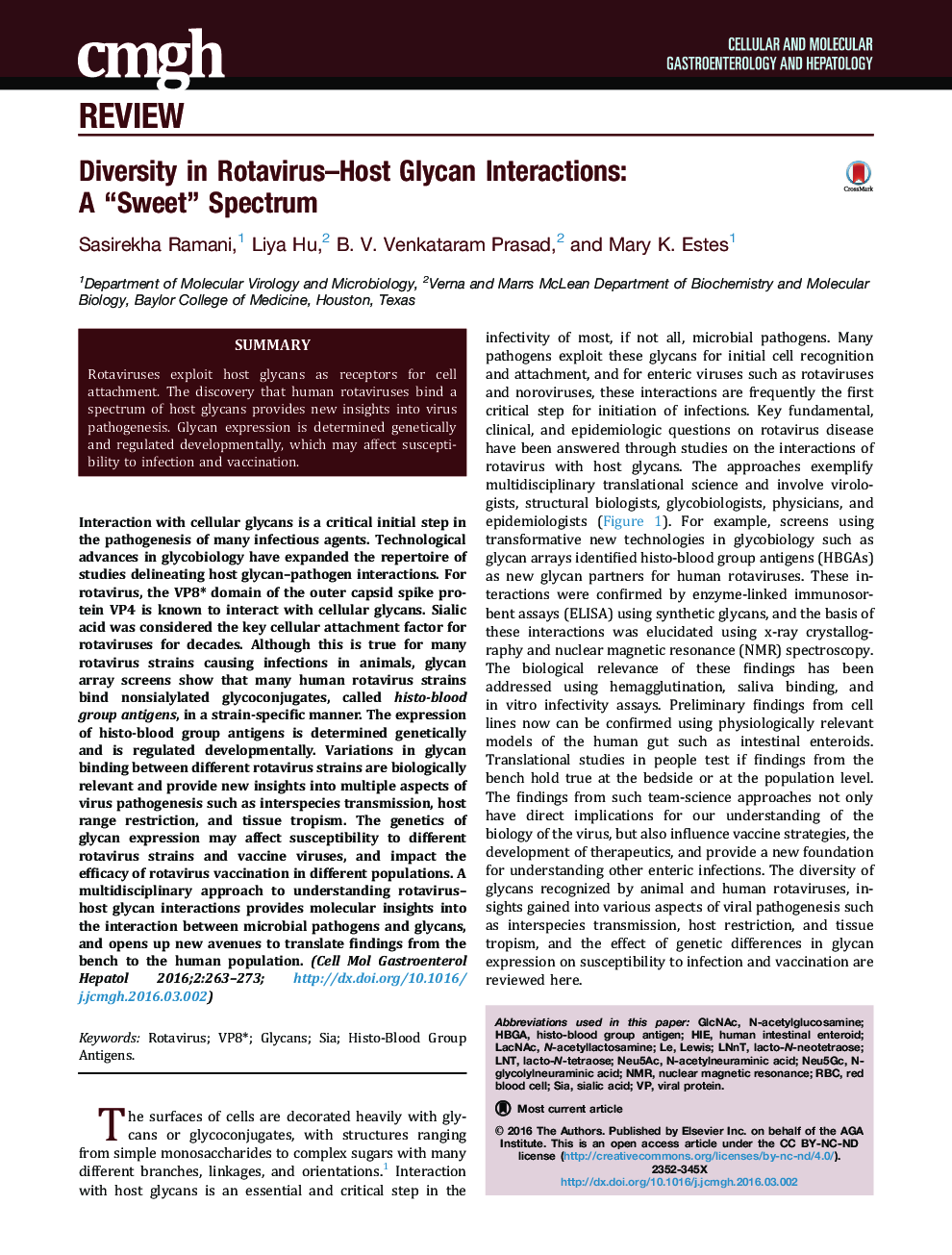| کد مقاله | کد نشریه | سال انتشار | مقاله انگلیسی | نسخه تمام متن |
|---|---|---|---|---|
| 2040787 | 1073129 | 2016 | 11 صفحه PDF | دانلود رایگان |

Interaction with cellular glycans is a critical initial step in the pathogenesis of many infectious agents. Technological advances in glycobiology have expanded the repertoire of studies delineating host glycan–pathogen interactions. For rotavirus, the VP8* domain of the outer capsid spike protein VP4 is known to interact with cellular glycans. Sialic acid was considered the key cellular attachment factor for rotaviruses for decades. Although this is true for many rotavirus strains causing infections in animals, glycan array screens show that many human rotavirus strains bind nonsialylated glycoconjugates, called histo-blood group antigens, in a strain-specific manner. The expression of histo-blood group antigens is determined genetically and is regulated developmentally. Variations in glycan binding between different rotavirus strains are biologically relevant and provide new insights into multiple aspects of virus pathogenesis such as interspecies transmission, host range restriction, and tissue tropism. The genetics of glycan expression may affect susceptibility to different rotavirus strains and vaccine viruses, and impact the efficacy of rotavirus vaccination in different populations. A multidisciplinary approach to understanding rotavirus–host glycan interactions provides molecular insights into the interaction between microbial pathogens and glycans, and opens up new avenues to translate findings from the bench to the human population.
Journal: CMGH Cellular and Molecular Gastroenterology and Hepatology - Volume 2, Issue 3, May 2016, Pages 263–273